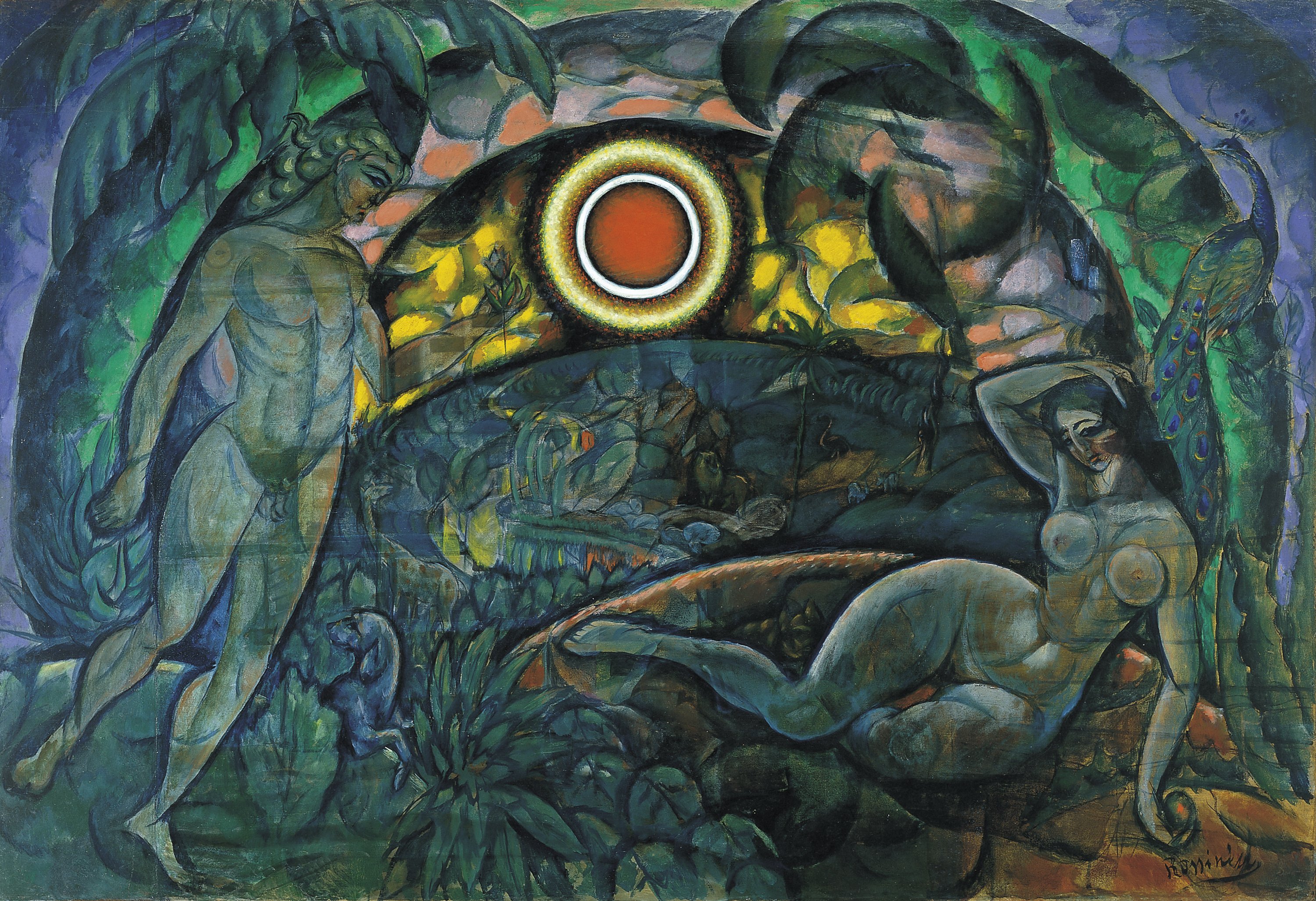Adam and Eve
During his first stay in Paris, from 1910 till 1914, the Ukrainian artist Wladimir Baranoff signed his paintings either as Daniel Rossiné or Rossiné. Only later, when he again exhibited his works in Russia after the October Revolution, did he adopt the name Wladimir Baranoff-Rossiné. Some of this artist’s most famous works, such as the painting The Forge, 1911 (Paris, Musée national d'art moderne), and the sculpture of 1913 Symphony no. 1 (New York, Museum of Modern Art), date from his first Parisian period. The analogy between pictorial and musical languages was one of the main experimental endeavours of Baranoff-Rossiné's works. ‘A young Russian [sic] artist called Rossiné, interested in the theory of painting and particularly in the music of colour, wishes to meet you’, wrote Kandinsky in a letter to Thomas von Hartmann. An important part of the works created by Baranoff-Rossiné around 1912 have as their subject Adam and Eve and the Apocalypse; in them he put into practice a very suggestive Orphist alternative to the painting of Robert and Sonia Delaunay, with whom he had a very close and long-lasting friendship. The Adam and Eve of the Carmen Thyssen-Bornemisza Collection is one of the main paintings of the first series, of which we know nine works, including the larger The Rhythm. Adam and Eve housed in the Germanisches Nationalmuseum, Nuremberg. The central motif in these compositions is the solar disk, linked, in the case of Adam and Eve, to the biblical subject of the story of Creation, whereas in The Apocalypse it is related to the opposite episode, that of end of the world. Inspired by Delaunay's coloured disks – that is, by compositions based on the synchronic action of circular planes of colour – and by some of the French artist’s works, such as The City of Paris, Baranoff-Rossiné adds to the poetics of rhythmical simultaneity a mythological and cosmogonic component which appears in the Adam and Eve as the universe's original evolution until the creation of the first man and woman.
The basic composition of the Adam and Eve present in the Collection derives from the gradation of circles around the solar disk, each one with a different colour. A modulation of the planes based on phytomorphisms, as well as the representation of animals and of Adam and Eve, are added to the geometry of eccentric circles. As in other paintings by Baranoff-Rossiné on the same subject, in which the circles are concentric and correspond, rather evidently, to the successive stages of Creation during the five days preceding the making of Man, according to Genesis, in this painting, although with a different composition, the chromatic circles also have a cosmogonic meaning. But the presentation differs: the coloured circles parallel to the surface of the picture, depicted as waves in centrifugal expansion, stand out against the circle which, placed on a secant plane with regard to the surface, shows an imaginary landscape suggesting Paradise. Other segments of the circle are superimposed on this one, delimiting the foreground, where the figures of Adam and Eve are set; their embodiment seems to stem from the original evolution of the universe whereas their movements spring from the creative impulse of the whole. The figure of Adam, almost floating in the air, recreates Dürer's model of Adam; the slightly Matissian representation of Eve, lying down and hiding the apple in the palm of her left hand, is one of the most beautiful nudes painted by Rossiné. The resonance of the rhythmical structure based on concentric and eccentric circles affecting the whole presides over the composition of this figure: the forms of her belly and hips echo the representation of the solar disk placed on the central axis of the painting.
There is a smaller Adam and Eve (private collection) that could perhaps be a sketch or a first version of the painting in the Carmen Thyssen-Bornemisza Collection. Baranoff-Rossiné painted these pictures with the cosmogonic subjects of Adam and Eve and the Apocalypse shortly before he took up purely abstract art.
Javier Arnaldo





